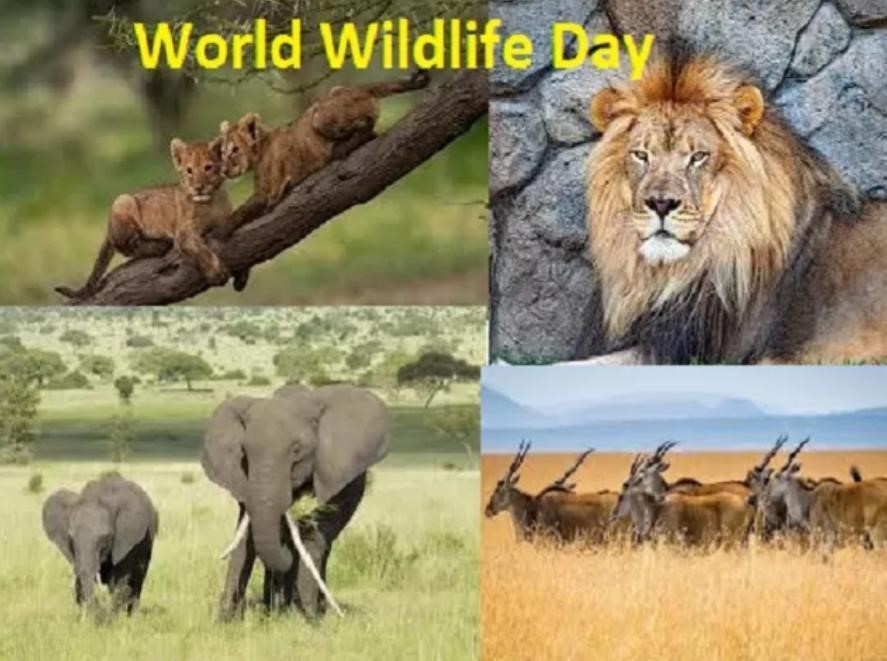
Around the world, between 200 and 350 million people live within or adjacent to forested areas and rely on several ecosystem services provided by forest and forest species for their livelihoods and also to cover their most basic needs like food, shelter, energy, and medicines. Around 28% of the world's land surface is presently managed by indigenous peoples, including some of the most ecologically intact forests on the planet. These spaces are not only important to their economic and personal well-being but also to their cultural identities. Forests, forest species, and livelihoods currently depend on them and find themselves at the crossroads of the various planetary crises we currently face due to climate change, biodiversity loss, and health, social and economic impacts of the COVID-19 pandemic. The day celebrates forest-based livelihoods and promotes forest and forest wildlife management practices that accommodate both human well-being and the long-term conservation of forests.
The theme of World Wildlife Day 2021 is “Forests and Livelihoods: Sustaining People and Planet”. The theme highlights the key role of forests, forest species, and ecosystem services in sustaining the livelihoods of hundreds of millions of people across the world mainly of indigenous and local communities with historic ties to forested and forest-adjacent areas.
The theme of World Wildlife Day 2020 was “Sustaining all life on Earth”. It focuses on all wild animal and plant species as a component of the diversity and livelihoods of people mainly those who live closest to nature. It is also mentioned in the UN Sustainable Development Goals 1, 12, 14, and 15, and their focus on alleviating poverty, ensuring sustainable use of resources and conserving life on land and below water to maintain the loss of biodiversity.
The United Nations General Assembly (UNGA) on 20 December, 2013 in its 68th session proclaimed 3 March as the day of signature of the Convention on International Trade in Endangered Species of Wild Fauna and Flora (CITES) in 1973. It is observed as UN World Wildlife Day to raise awareness and celebrate the world’s wild animals and plants.
The CITES Secretariat was designated as the facilitator of the observance of Wildlife Day on the UN calendar by the resolution of UNGA.
Important projects of the Indian Government for Wildlife protection.
In 1972, Project Tiger was initiated that not only focused on the conservation of tigers but also on the entire ecosystem. Ministry of Environment Forest and Climate Change sponsored this project. About 47 tiger reserves situated in more than 17 regions including Corbett National Park and Ranthambore National Park that conducts several assessments of a number of tigers, their habitat, hunting habits under the supervision of the Tiger Task Force. No doubt, Project Tiger helped in the recovery of the habitat and increase the population of the tigers.
The government of India started Project Elephant in 1992 for conserving elephants and their habitat. They also focused to develop migratory routes with the help of scientific and planned management measures. This project also highlights the welfare of the domestic elephants and considering the issues like mitigation of human-elephant conflict.
For the conservation of crocodiles, the Government of India started a Project. As we know that the species of crocodiles are on the verge of extinction. The main objective of the project is to protect the remaining population of crocodiles and there to establish sanctuaries for protecting their natural habitat. It will also promote captive breeding, improve management, and also it will involve the local people in the project.
Wildlife Institute of India, Dehradun started the UNDP Sea Turtle Project with an aim to conserve the Olive Ridley Turtles in November 1999. The project focuses on 10 coastal states in India mainly Odisha where a map of breeding sites of Sea Turtles was prepared. Breeding places and habitats along the coastline were identified and migratory routes were taken by Sea Turtles.
Author
M. Jeyashri MBA II Year
2021-12-04